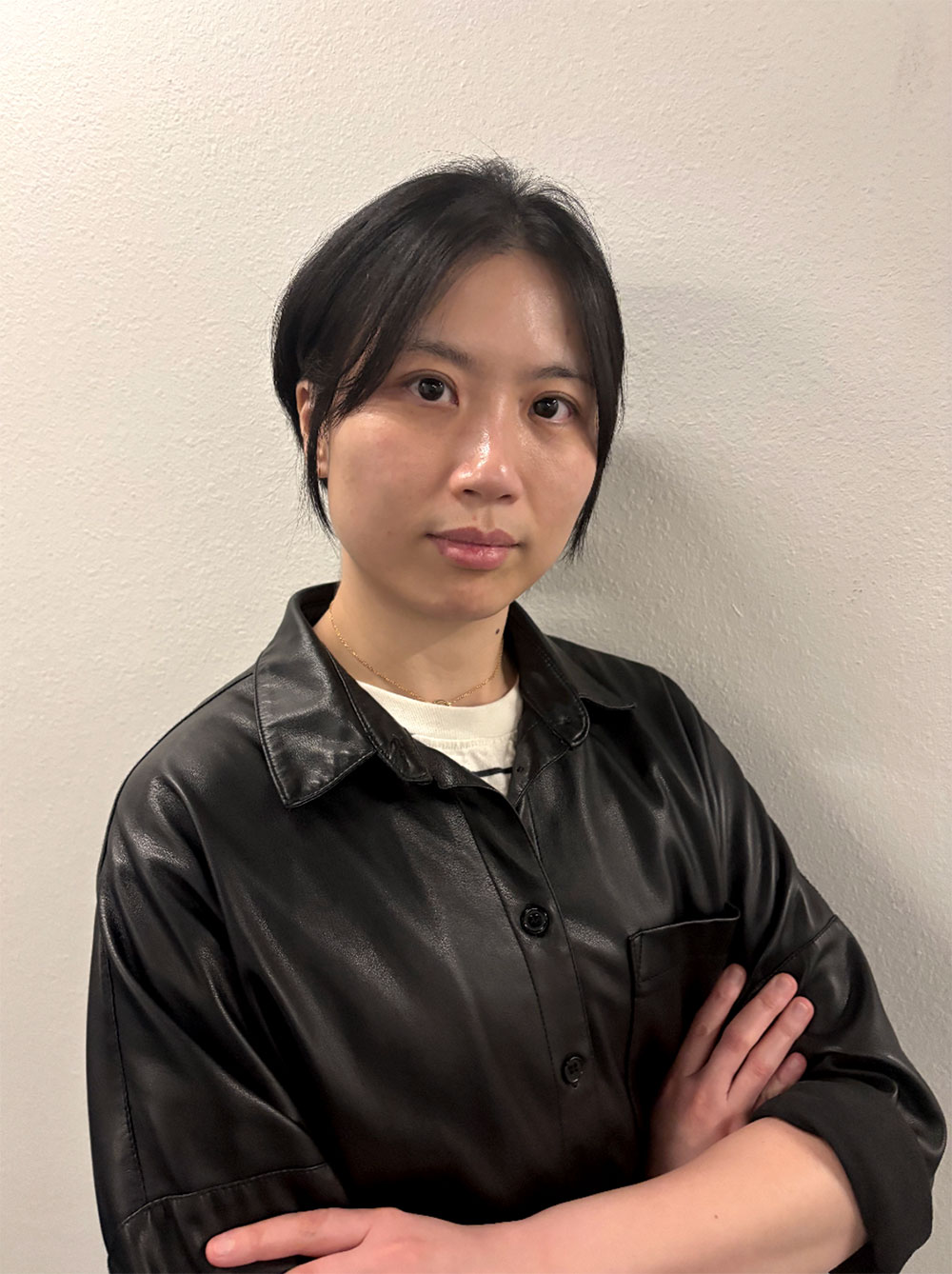In a world where every swipe, click, and scroll is a transaction of attention, visual design has become the language of connection that’s universally understood. It’s not just about how it looks; it becomes something that seeps into your consciousness—turning information into feeling, brands into friends, and jargon into simplicity. A good logo embodies a company’s values; a thoughtful app interface converts frustration into flow. Visual designers are the virtuosos of these wordless conversations, employing color, text, and layout to bridge intention and interpretation. Their work decides how we experience social movements, grocery delivery apps, and everything in between, infusing pixels and paper with meaning. But in a world careening toward automation, the most powerful designs are not merely pleasant to behold—they’re deeply human, pairing innovation with empathy. That’s why the insight of visionary designers like Xiyu Deng matters: their insights keep us in mind that design is not only an art form, but a charge to watch, feel, and amplify the human condition. Award-winning Senior Designer at Instrument, Xiyu Deng has reimagined what it means to exercise this duty.
From Apple TV to Uber to SurveyMonkey, Xiyu Deng’s portfolio combines strategic accuracy with poetic narrative—whether gamifying math exercises into co-operative missions for Giant Steps or translating Hong Kong’s political upheaval into 50 haunting Cantopop album covers. A winner of a TDC Certificate of Typographic Excellence and Graphis Silver Award, Deng is celebrated for campaigns that bring the intangible into focus: Uber’s driver-centric tales, Apple TV’s eco-sensitive imagery, and TutorMe’s student-centric interfaces. Xiyu Deng’s genius goes beyond her work, however. As a mentor and “legacy reimaginer,” she cultivates spaces in which risk begets innovation, showing that design’s greatest strength lies in its ability to amplify voices, mend divides, and write scripts for the future. For creatives seeking to leave a legacy, Xiyu Deng’s journey is a masterclass in marrying artistry with audacity-one pixel at a time.
- Empathy is Your Superpower
For Xiyu Deng, empathy is not a buzzword—it’s the guiding compass for every pixel, gradient, and interaction. Her work shows that design’s greatest strength is not in the aesthetics, but in being able to understand the unsaid stories of those interacting with it.
Consider her Uber Earners Opportunities campaign, where she imagined gig work as a tale of independence. Instead of clinical corporate photography, Deng created split-screen narratives of workers balancing work and life—a parent coaching soccer alongside hours spent on the road. Cool-to-warm color shifts echoed the smoothness between “off-duty” calm and active earning, and interactive sliders enabled workers to visualize how adjusting hours could get the job done. The result? A campaign that didn’t just sell flexibility but embodied it, winning accolades from drivers who felt heard. This ethos extends to Xiyu Deng’s Apple TV ad campaigns, as well. To honor Women’s History Month, she superimposed old protest posters with new portraits, depicting them in gold and violet gradient to honor struggle and triumph. To mark Earth Day, fragmented earth textures and thermographic data visualization renderings transformed climate science into unvarnished emotion.
Even her Cantopop Album Covers, born out of the political turbulence in Hong Kong, were a “visual diary” of collective fear and resilience—searing red gradients and broken self-portraits turning societal anxiety into artwork. “Empathy is about shaping silence,” Deng describes. When she designs for gig workers, activists, or students, she listens to the silences between sounds—the frustrations, hopes, and identities that cannot be quantified. For creatives, her advice is direct: Start with humanity, not deliverables. By putting “Whose story am I elevating?” before “What’s the trend?”, you produce work that isn’t just attention-grabbing—it changes perspectives.
- Brave Spaces Are Where Leadership Emerges
For Xiyu Deng, leadership emerges not in control but in producing spaces where vulnerability creates innovation. When teachers were hesitant to adopt Giant Steps’ gamified learning platform—afraid it would be too structured—Deng transformed their doubt into co-creation. She co-created a space where teachers and students could play and experiment freely: math problems became “adventure maps,” progress badges became mountain peaks, and failures became stepping stones.
Neurodiverse students, initially seen as a hindrance, revealed how color-coded paths could soothe anxiety, turning rigid lesson plans into active challenges. This philosophy informs her management of Instrument. Xiyu Deng doesn’t prescribe; she creates “risk-friendly” systems where beginning designers’ uncertainty produces eureka moments. Look at TutorMe’s design: progress isn’t a flat line graph, but a star map of connected paths. Students personalize avatars, rearrange modular grids, and share milestones in flashing “collaborative zones”—a design consistent with Xiyu Deng’s belief that progress is nonlinear and communal. “Actual leadership creates rooms where falling is not failure—it’s feedback,” she asserts. From Uber’s driver-centric ads to Cantopop covers that emerged from Hong Kong’s turmoil, Xiyu Deng’s work proves courage is not grand gestures, but the courage to listen, transform, and permit others to remake the rules. For creatives, the moral is clear: Lead by empowering, not directing. If people feel their stumbles matter, they’ll make paths you never imagined.”.
- Research Is an Act of Love
For Xiyu Deng, research isn’t a checklist—it’s a ritual of intense listening. Having immersed herself in Hong Kong’s protests of 2019 prior to designing her Cantopop Album Covers, she captured tear gas haze and whispered stories of insurrection. The result? A visual diary in which fire-blackened red gradients and cracked self-portraits channeled collective fear into art. “To design with empathy,” she says, “you must first witness.”.
This philosophy guides her scientific collaborations. Xiyu Deng collaborated with climatologists to translate raw data into sense-memory textures: cracked earth for drought data, thermographic slopes for rising temperatures. Her Giant Steps gamified learning platform likewise emerged from class observations—sitting in on classrooms and watching how neurodiverse students came to peace through color-coded trails, how educators redefined “adventure maps” as peer-mentoring tools.
Even Uber’s Earners Opportunities initiative began with weeks of watching gig workers’ routines. Split-screen narratives of drivers coaching soccer matches between shifts did not merely capture flexibility—it captured lives she’d seen up close.
“Research is the way we respect complexity,” Xiyu Deng says. Unlocking climate science or student worries, she begins every project as a contract: Listen first, design second. Her images show that the most significant images aren’t created in studios, but honed in the messy, glowing lives of people. To artists, her message is straightforward: Fall in love with the world your public inhabits—then share that love through form.
- Treat Personal Projects As Sacred
Xiyu Deng’s Cantopop album covers—equally received works hailed as a “visual diary of perseverance”—began not as commissioner commissions, but as wee-hour statements within her studio. In the midst of Hong Kong’s 2019 political upheaval, Deng rendered communal fear and grit into 50 covers, adorned with gradients as an emotional lexicon. For No Tomorrow, a fiery red gradient engulfed 80% of the painting, its transparency fluctuating like the city’s uncertain future, as a shattered self-portrait stood for her single act of defiance. These paintings, born under tear gas-scathed skies and whispered stories of resistance, became a whispered voice when public discourse was stifled.
“Creativity thrives when you create for your own heartbeat first,” Deng explains. Free from client specifications, she blended Cantonese fonts with otherworldly gradations, translating single catharsis into cultural symbols. From loose drawings, a Graphics Silver Award-winning body of work became reality, showing how experimentation and playfulness in personal projects can inform professional work.
For Xiyu Deng, these projects are more than passion—they’re ethical imperatives. TutorMe’s modular interfaces and Uber’s empathetic campaigns owe their humanity to lessons learned in those unguarded moments. “Personal projects are where you rediscover why you design,” she reflects. Aspiring creatives, take note: Guard your midnight experiments. They might just become the work that etches your name into history—and heals a fractured world.
- Collaboration Sharpens Your Craft
For Xiyu Deng, creativity is not a solo act—it’s an orchestra of minds. Her best work, from Uber’s split-screen tales to Giant Steps’ gamified missions, came out of collisions of mind. The Earners Opportunities campaign married driver testimonials with developer insights, transforming rigid briefs into interactive sliders and double imagery that represented gig workers’ lives. Similarly, TutorMe’s student-centric interface evolved out of workshops with teachers and students, resulting in adaptive grids and “collaborative zones” where group milestones were collective triumphs. “Magic happens when you let egos dissolve,” Deng says.
But co-creation requires grit. Her TDC 67 typography project earned a Certificate of Typographic Excellence. Such grit rings in work such as Greenhouse’s recruiter platform, where hiring managers’ feedback reimagined kinetic typography as a “roadmap” for cause-driven design. Her politically charged Cantopop covers, which were conceived in Hong Kong’s upheaval, developed through discussions with activists and musicians, blending protest iconography with haunting gradients. Her mantra? Take feedback as fuel. Whether honing a meme-able SurveyMonkey data visualization or serving as a mentor designer at Instrument, she advocates “reckless refinement”—the practice of prodding ideas until they bite deeper. In Deng’s world, every “no” is a stepping stone to a bolder “yes.”
As we navigate the labyrinth of Xiyu Deng’s philosophy, we’re left to wonder: What does it mean to design in a world where pixels create perceptions, and gradients carry the weight of human emotion? If empathy is the compass, as Deng maintains, then how do we rewire our imaginative processes in order to find the voiceless stories buried in the spreadsheets and style guides? When leadership is no longer marked by authority, but by midwifing “brave spaces,” which systems must we blow up to allow for vulnerability to incite innovation? Deng’s practice challenges us to test the ethics of beauty—can a color palette truly amplify marginalized voices, or would it potentially flatten lived struggle to metaphor? As technology hastens automation, will designers be human translators, bridging the gap between affectless data and affective connection? Her Cantopop cover art, born of protest, asks: When institutions fail, does art become the last bastion of truth-telling?
And if individual projects are “sacred,” what truths are we suppressing by prioritizing algorithms over instinct? Deng’s persistence in the face of failure makes us confront our own susceptibility—do we listen to feedback as fossilized opinion or fertile ground? Her collaborations remind us: In a fractured world, is collective creativity our sole path to wholeness? Perhaps the most important question Xiyu Deng leaves us with is not a question of design, but of purpose: When the screens are dark and the trends are over, what will remain of our work—beautifying pixels, or enduring resonances of the human spirit?






